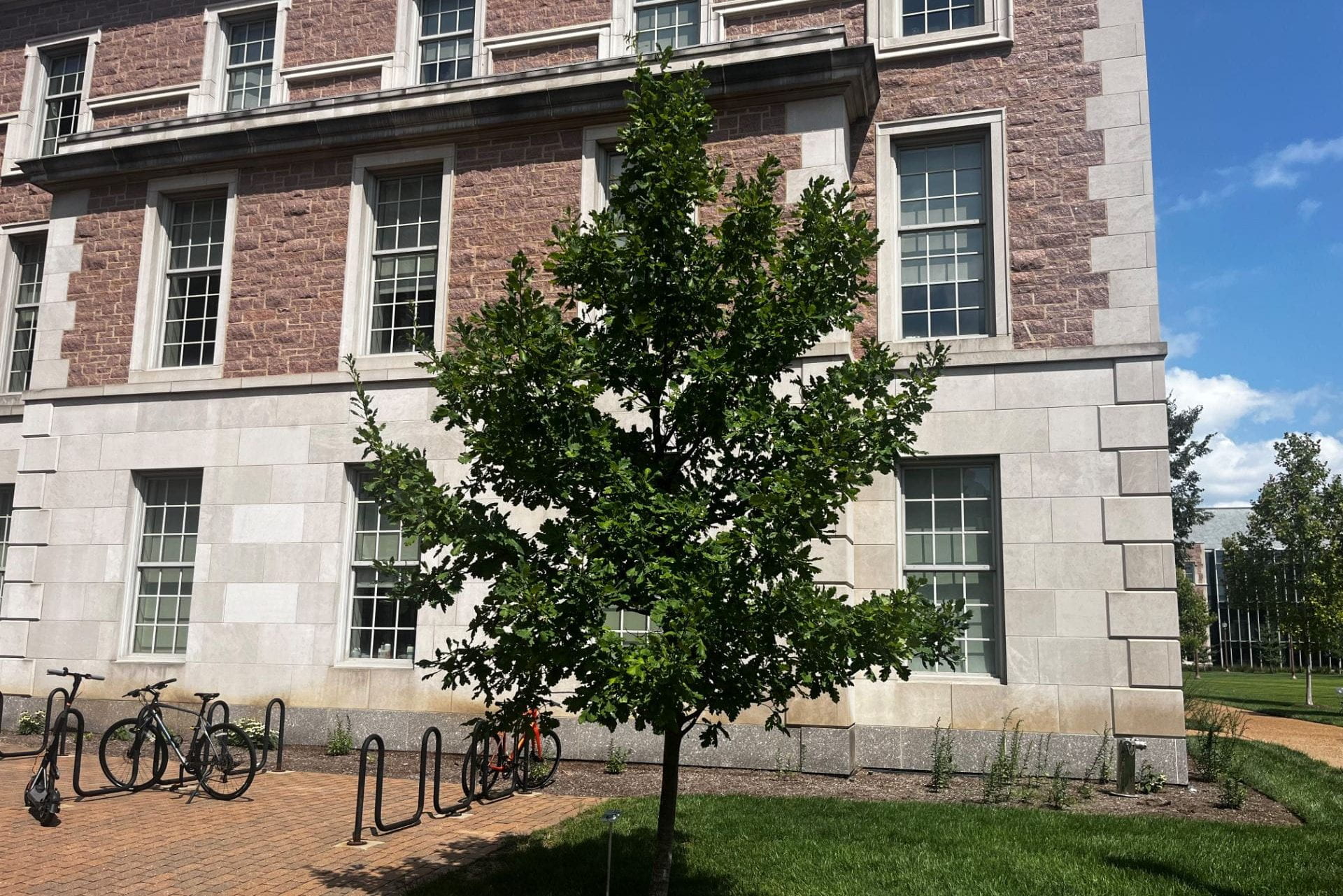English Oak
Arbor walk #99, Treekeeper ID #6570

English Oak is native and found in mixed woodland areas and planted widely in the North America since the 1600s. It has long been a timber source in England. English Oak prefers a moist well-drained soil but can adapt to a wide range of soil conditions. It may take 25 or more years to bear acorns.


GPS Coordinates
N/A
Percent Concrete
N/A
Distance to Buildings
| Year | Close Building #1 | Close Building #2 | Close Building #3 |
|---|---|---|---|
Distance to Other Species
| Year | Close Species #1 | Close Species # 2 | Close Species # 3 |
|---|---|---|---|
Standard Measurements
| Year | Height (m) | DBH (cm) | Caliper (m) | Crown Diameter N-S (m) | Crown Diameter E-W (m) | Average Crown Diameter (m) |
|---|---|---|---|---|---|---|
| 2023 | 5.8 | 7.5 | N/A | 2.85 | 2.69 | 2.77 |
Nests and Pests
| Year | Description |
|---|---|
| 2023 | N/A |
Leaf Identification
The leaves of the English Oak are short stalked with blunted, finger-like lobes. At the leaf base, there are two small ear-shaped lobes that point down and away from the midvein. They are a dark green color, with a yellow-green underside. In the fall, these leaves will turn golden yellow.
Twig and Bud Identification
The twig is light brown, with a yellowish or reddish tint to the twig and buds. The buds are fully covered in reddish-brown scales, which have sparse hairs sticking out from scale fringes but not on the scales themselves. Numerous buds grow at or near the terminal bud.
Bark Identification
The English Oak has rigid, dark gray to black bark.
Fruit Identification
The English Oak has oval acorns, more elongated than most oaks. The cup has gray scales but does not extend far down the nut. Acorns are between 1/2″ and 1″ in length, and grow in groups of 1-3 acorns per stalk.
Flower Identification
The flowers of the English Oak are yellowish-green and inconspicuous. The males hang in clusters of catkins, and the females are tiny spikes on the leaf axis.
[photo forthcoming]
ID Tips
- The leaves of the English Oak look incredibly similar to the White Oak; both have numerous finger-like lobes. However, the English Oak can be distinguished by the small, ear-shaped lobes at the base of the leaf and its shorter petiole (leafstalk).








